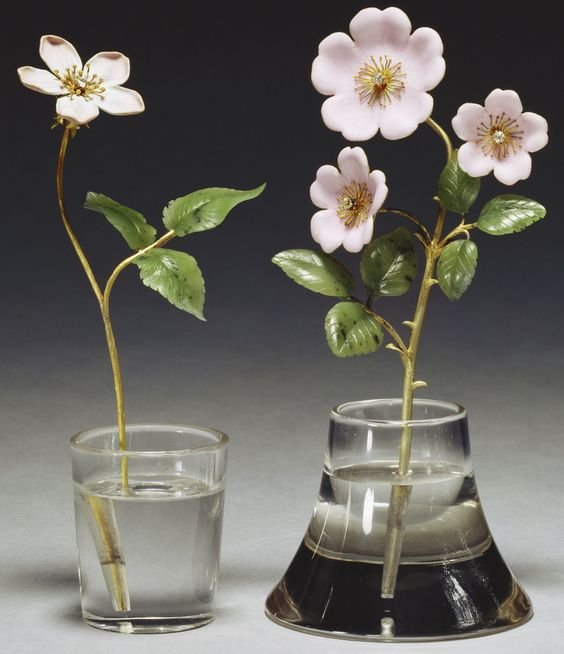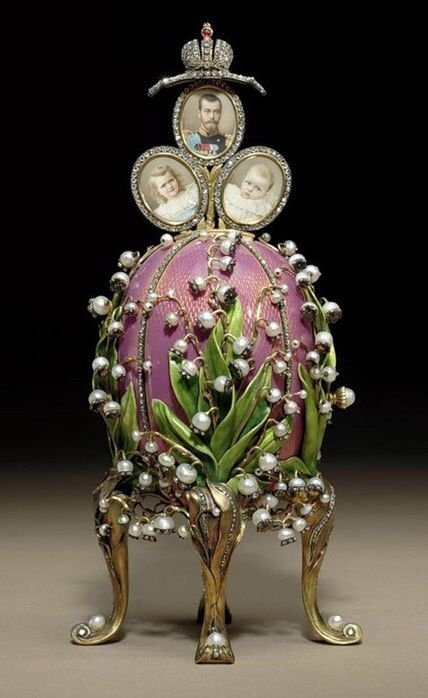Jewelled Stillness: Faberge Flowers
With Spring bursting and the first lily of the valley popping up through the earth, I am always reminded of Faberge’s beautiful hardstone flowers. Seen by many as the height of the goldsmith’s kitsch, Westerners always forget the high esteem in which flowers are held in Russia, as they herald the end of truly harsh and ferocious winters.
Two Faberge studies of primroses in enamel, gold and jade.
Faberge’s creations were truly still lifes in jewels- these must have appeared particularly bright and alluring against the dull light of a winter St. Petersburg drawing room. They are a true celebration of Russia’s extraordinarily varied mineral wealth: amethyst and diamonds, rose quartz and agates, malachite and diamonds, lapis lazuli and pearls. The compositions are truly inspired; the prevailing decorative style of the age was the Garland Style and yet Faberge studied the ancient Japanese art of flower arranging, which emphasises different areas of the plant’s form and focuses on line, shape and form- the polar opposite of the Garland Style. As ikebana only ever uses one or two stems is a simple vase, this is where a lot early Faberge forgers fell as they tried to pass off their multi-bunched copies.
Faberge’s competitors were never able to reach his refined elegance either- they always put the flower in a jewelled pot, or added extraneous diamond dewdrops, simply making their own jewelled flowers seem contrived in comparison to the Russian goldsmith. The most important collection of Faberge flowers is of course, the Royal Collection. It was started by Queen Alexandra (who actually preferred the animals) and has been added to by Queen Mary, the Queen Mother and the Prince of Wales.
The most iconic of Faberge’s blooms is of course the Lily of the Valley- it features in one of his best known Imperial Easter Eggs, a lot of his jewellery and several of his flower compositions. The most important Lily of the Valley piece is the Imperial Lilies of the Valley Basket specially made for the Tsarina Alexandra Fedorovna- it was her favourite flower and one of the very few multi stemmed jewelled flowers made by Faberge.
The 1898 Lily of the Valley Imperial Egg
The most important Faberge piece in America: Empress Alexandra’s Lily of the Valley basket





